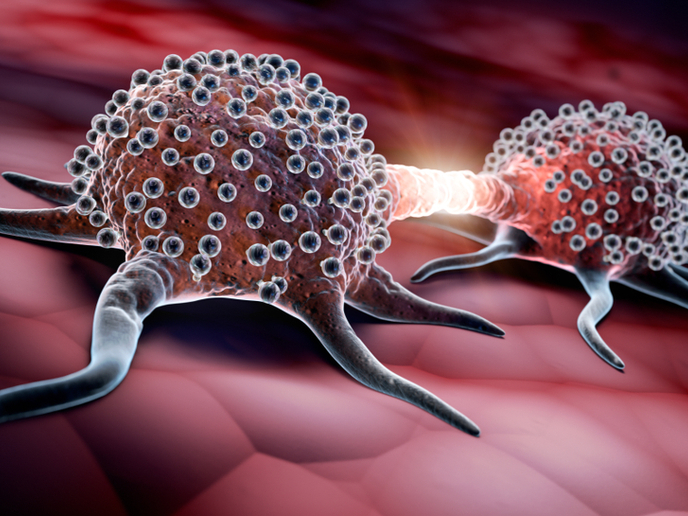Nanoscale machines deliver medicine accurately to its target
Conventional delivery of drugs offers limited biodistribution to the desired tissue and is often accompanied by toxicity issues. Ideally, a drug delivery platform should offer the option of real time programmability to allow precise distribution of the active pharmaceutical ingredient (API). Further, it should minimise side effects and toxicity. Ideally, it should offer controlled biokinetics (movement of the drug within the tissues) and high treatment efficacy at a reduced dose.
A smart drug delivery platform
The EU-funded SMARTRIOX(opens in new window) project developed a programmable technology that combines non-organic materials with components found in living organisms. “Our goal was to address the unmet need of targeted drug delivery platforms through a programmable approach that can be offered at the point of care,” explains project coordinator Roy Farfara. The SMARTRIOX platform consists of biocompatible porous nanoparticles that are loaded with the selected drug. The chemical properties of the nanoparticles can be varied depending on the disease of interest. The innovation here lies in the incorporation of DNA molecular machines that respond to particular stimuli, uncap and unload the active payload of the nanoparticle.
A combinatorial treatment for triple-negative breast cancer
Researchers focused on the treatment of triple negative breast cancer(opens in new window) (TNBC), an aggressive type of breast cancer, by developing the TXN770 nanoparticle-based platform for the delivery of doxorubicin(opens in new window). As TNBC is hormone independent, there are currently no targeted therapies, and thus the HER2-targeting Herceptin cannot be used. Using the SMARTRIOX platform, researchers hope to cut down doxorubicin dose but increase therapeutic efficacy as the drug will be delivered specifically to cancer cells. The SMARTRIOX platform offers a further advantage for TNBC treatment as it can accommodate the use of DNAzymes(opens in new window) as catalysts to cleave target mRNA molecules. “DNAzymes resemble programmable scissors and can be designed against oncogenic mRNAs to deactivate most common pathways of cancer development and resistance,” emphasises Farfara. The team has designed over 100 DNAzymes, which are readily available for physicians to use depending on the patient’s pathology tests and tumour histology. For example, in the case of TNBC, when a patient is BRCA(opens in new window) positive, treatment with poly ADP-ribose polymerase(opens in new window) (PARP) inhibitor is approved and recommended. In the case of the SMARTRIOX technology, a PARP DNAzyme can be employed, which catalyses the PARP mRNA. Preclinical evidence in animal models shows that the SMARTRIOX platform has higher efficacy and safety compared with the gold standard. The company’s regulatory strategy includes orphan designation and accelerated approval to reduce the time required for commercialisation.
Advantages and prospects
SMARTRIOX offers the option to programme medicine in real time. The programming is done in the hospital setting according to the treating physician’s requirements and allows to tailor the treatment to patient-specific needs. RNA therapeutics offer significant advantages over other treatment modalities (protein or DNA level). Treatment at the mRNA level controls multiple downstream non-competitive effects since one mRNA generates hundreds of protein molecules on average. DNAzymes were proven to catalyse in vitro up to a 1 000 mRNA copies and hence potentially inhibit the creation of hundreds of thousands copies of the target protein molecules. These advances are expected to revolutionise healthcare and transition medicine into a new era of programmable medicine.







